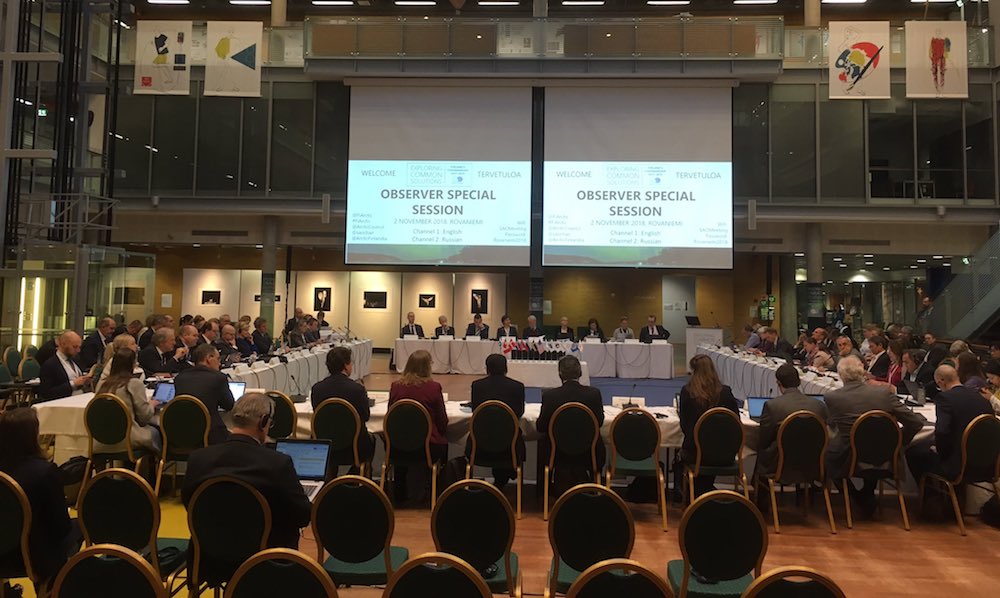During Finland meeting, a discussion of Iceland and fire and the Arctic Council’s future
As Helsinki winds down its chairmanship, the focus turns to who – and what – comes next for the council.

Representatives of the eight Arctic Council states gathered last week in Rovaniemi, Finland, heard details of Iceland’s proposed program for its 2019-2021 chairmanship of the organisation.
Reykjavík has already suggested that it will take up issues such as climate and the social impact of the changes facing the region. Although no specific details of its planned chairmanship emerged from this week’s meeting, Aleksi Härkönen, the Finnish diplomat who currently chairs the council, indicated to the press afterwards that the Icelandic chairmanship would steer the Arctic Council towards closer ties with the Arctic Economic Council, a sister organization, and work to improve access to telecommunications in the region.
Bringing the AEC, established in 2014 with an uncertain mandate, closer into step with the Arctic Council has been one of Finland’s goals. Finland also made telecommunications one of the priorities of its two-year chairmanship, though the council has been seeking to address the issue for much longer.
[The Arctic Council: First among many]
A report about the topic is due to be submitted in 2019. But, despite all the attention, the primary hurdle to connecting remote communities in the North persists: It is expensive.
New technologies may emerge to bring down the cost, but the focus, according to Härkönen, should be on taking advantage of available technologies, not ones that may come along.
The #SAO of #Iceland presented Iceland’s preliminary program for Chairmanship in the @ArcticCouncil 2019 – 2021 under the heading: Together Towards a Sustainable Arctic in #Rovaniemi today. pic.twitter.com/A87wsZiXrP
— MFA Iceland Arctic (@IcelandArctic) November 2, 2018
Also due this spring, a review of the way the Arctic Council conducts its business. The review is still being carried out, but Härkönen suggested that rather than the fundamental changes it appeared to herald when it was started three years ago, the result was likely to be an “on-going process” that started with more moderate changes that included “streamlined structures” and more clearly defined roles for observers.
One specific topic taken up during the Rovaniemi meeting was whether the council should begin addressing the growing problem of wildfires in the North. The proposal comes after a summer in which more than a dozen fires broke out north of the Arctic Circle. Most of them were in Sweden, but fires have been recorded in recent years in Greenland and the Northern reaches of Alaska, Canada and Russia.
[Meteorologists urge closer collaboration to improve safety, climate assessments]
Although once unheard of in these areas, fires are being seen more frequently as their climates begin drying out, going from an ideal for environment for building up the fuel needed to sustain widespread fires, to one in which that fuel will easily burn.
“Wildfires,” Härkönen said, “have become an issue that is important for the Arctic Council. Our goal is to protect communities, and in particular indigenous communities.”
The Arctic Council will now look into whether it can play a role in preventing or containing fires as they become more common. One of many burning questions that remain to be answered.